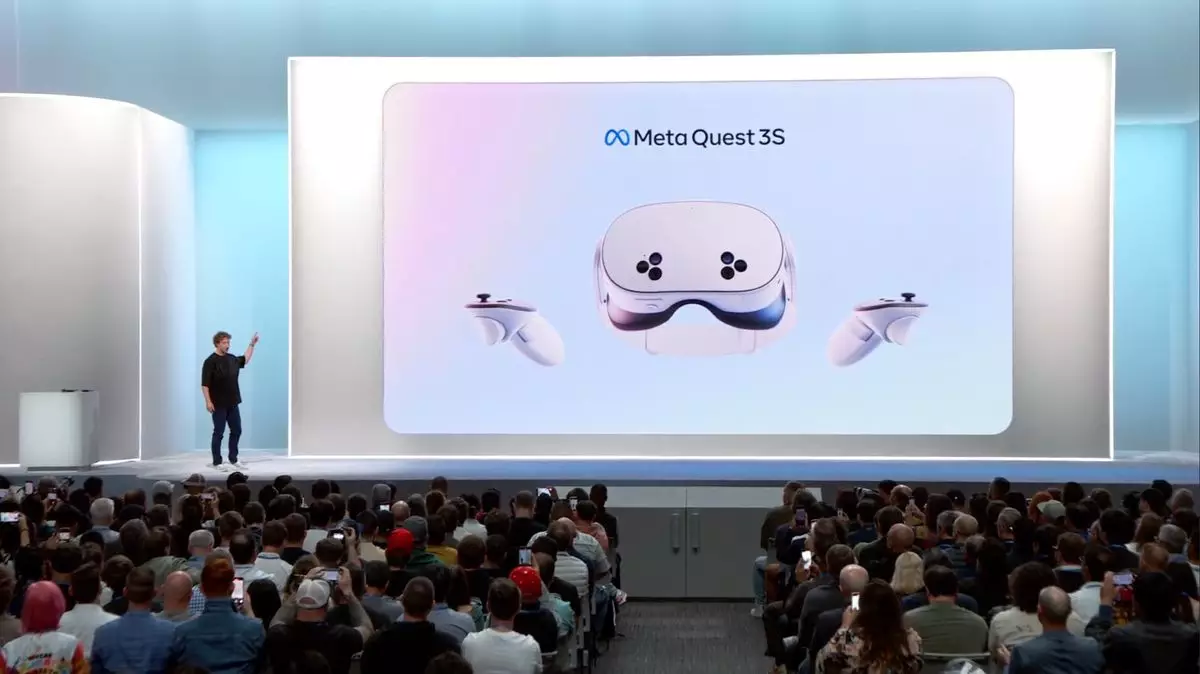Meta has announced its latest addition to the virtual reality (VR) market: the Quest 3S, slated for release on October 15. This new headset is designed to offer a more affordable option without sacrificing too many core features. The Quest 3S utilizes the same powerful Qualcomm Snapdragon XR2 Gen 2 processor as its predecessor, the Quest 3, but comes with a few compromises aimed at enhancing affordability. This strategic move reflects Meta’s commitment to democratizing access to immersive technologies while remaining competitive in a rapidly evolving landscape.
Cost-Effective Choices
The Quest 3S offers two storage options: a 128 GB model priced at $300, a $200 reduction from the standard Quest 3, and a 256 GB version available for $400. By keeping the technological backbone intact while substituting higher-end components, such as swapping pancake lenses for more traditional fresnel ones, Meta aims to cater to price-sensitive users who desire an entry point into the increasingly compelling world of VR. However, consumers and critics alike are left to ponder how these changes may affect overall performance, particularly in terms of visual quality and comfort.
Limited Changes Yet Significant Impact
Despite the reduction in manufacturing costs—evident in the change of lenses—the core experience of the Quest 3S remains largely unchanged. Mark Zuckerberg emphasized that the “defining features” of the Quest 3 have been preserved, which could provide reassurance to existing and prospective users. Nevertheless, some initial concerns exist regarding how the switch from pancake to fresnel lenses might influence the headset’s field of view and general comfort during prolonged use. Although the gateway to virtual reality is being opened wider, users must still weigh the pros and cons of this trade-off in technology.
During the Meta Connect keynote, Zuckerberg introduced the Quest 3S amid a demonstration that showcased new VR experiences. However, the live demo faced some hiccups, as a technical glitch led to an awkward moment for both Zuckerberg and his colleague Kenny, revealing the unpredictable nature of live technology presentations. However, this lapse may be viewed more as a minor blip rather than a disastrous failure, as VR events often carry an inherent risk of technical issues.
Despite the snafu, Zuckerberg took the opportunity to announce a partnership with Microsoft, revealing plans that will enable users to view their Windows desktop in VR. This feature allows the Quest 3S to act as an extension of a user’s PC, improving the synergy between VR and traditional computing systems. As Meta continues to explore new functionalities for its headset, the potential for seamless integration provides an intriguing facet of the broader VR ecosystem.
With the introduction of the Quest 3S, Meta has effectively positioned the headset as a direct competitor to the aging Quest 2, which has long been a popular entry-level option within the VR market. As the Quest 3S gains momentum, the days of the Quest 2 appearing as a budget-friendly alternative may soon be numbered. There is an undeniable shift in how Meta intends to shape the landscape of consumer VR, presenting the Quest 3S as an enticing, budget-conscious choice.
This forthcoming launch not only simplifies consumer choices but could also prompt a reevaluation of the best VR headsets currently on the market, particularly for those looking for a cost-effective solution without compromising essential features. Ultimately, if the Quest 3S proves capable of thriving as both a standalone device and a productive tool for PC integration, it might redefine what users expect from budget-friendly VR headsets.
Meta’s Quest 3S rollout represents more than just a new product; it signifies a shift towards making immersive technology accessible to a broader audience. If users find that the headset meets their needs without significant sacrifices in their VR experience, we might be witnessing the beginning of a new era of virtual reality where affordability and quality can coexist harmoniously.

